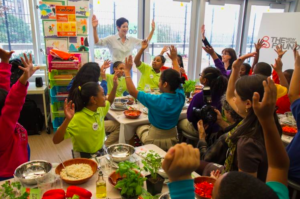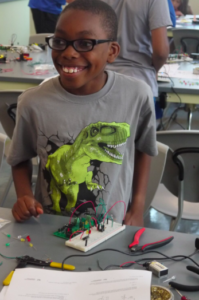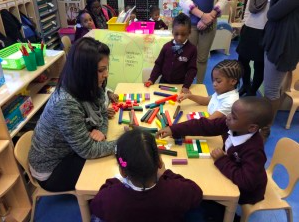Everyone is talking about how to update and innovate within education, and proactively prepare kids for the future. Real-world learning is central to that ongoing dialogue, and with good reason: Four out of five students who dropped out of high school wished they’d had more opportunity to do real-world learning in school, while benefits of real-world learning range from improved time management, boosted creativity and curiosity, a first-hand look at areas of interest, better sense of how knowledge is enacted in the real world, and the betterment of non-academic and academic skills alike. 
Sounds like a great way to spend the school day, right? We agree. That’s why we’ll be spending May 10th-11th in Pittsburgh, exploring innovation in education through conversations with experts about the strides being made in real-world learning at our annual National Forum. As we prepare for this exciting event, we are learning about incredible examples of what real-world learning looks like, and are eager to share some of them with you.
According to Ron Sofo, CEO and Principal at City Charter High School in Pittsburgh, real-world learning is built into the model of the school. “We teach a three-year career exploration development curriculum that ends up with a real life, 13 week, minimum two-and-a-half hours a day internship experience in the real world of work, related to a career area each individual student has identified through those three years of being in career class,” he explained.
Students at City Charter have on-site mentors at their internships who show them various aspects of the work in a given area. Whether for-profit to nonprofit, the government or medicine, the internship at City Charter is a graduation requirement, meaning all students should exit high school with a clear career interest that they are eager to pursue. “The internship has always helped them figure out either what they want to do after high school, or what they don’t want to do–we believe both those outcomes are valuable,” Sofo said.
The Da Vinci Schools in California share a similar commitment, but have a slightly different approach, to real-world learning. Industry partners link up with the school to offer students skills needed in the workforce that can’t be taught within a traditional academic curriculum. The combination of project-based learning through a network of community partners means that the Real-World Learning Program bridges “the gap between the classroom and the workplace,” giving students practical real-world learning experiences so they are “not only college-ready, but career-prepared and community-minded.” In addition, there is a huge focus on project-based learning, including teachers pitching projects to industry professionals who ensure projects are authentic, or industry partners participating as teachers, leaders, or even judges.
 Community is on City Charter students’ minds, too. In addition to obtaining hands-on knowledge in financial literacy–from how to write a check to figuring out to pay for college–students have a graduation project that includes writing a research paper, creating a community-oriented action project, and presenting their plans to a panel of judges, made up of local community leaders. The objective, Sofo says, is for students to “communicate what they’ve learned, both research-content wise as well as learning that goes beyond just the academics.”
Community is on City Charter students’ minds, too. In addition to obtaining hands-on knowledge in financial literacy–from how to write a check to figuring out to pay for college–students have a graduation project that includes writing a research paper, creating a community-oriented action project, and presenting their plans to a panel of judges, made up of local community leaders. The objective, Sofo says, is for students to “communicate what they’ve learned, both research-content wise as well as learning that goes beyond just the academics.”
Going beyond academics isn’t simply about incorporating career readiness. It is also about supporting students’ holistic development as citizens and future leaders. At Polaris Charter Academy in Chicago, the mission is to “educate students to be self-motivated, creative, critical thinkers,” and shape them into “life-long learners and citizens with a strong sense of personal and civic responsibility.” Real-world learning is about more than making good students. It speaks to higher ideals in education–fostering understanding and empathy, creating meaning, problem-solving that is socially responsible, understanding your role within the world, and highlighting the power of exploration and hands-on effort. 
So what’s the ultimate benefit of real-world learning? According to Sofo, hands-on experiences like the internship have, in addition to “preparing them [to be] successful in college, excited them or added value to what they’ve been able to do after high school graduation,” including going directly into internships or apprenticeships, starting their careers, or learning in a technical trade school.
And isn’t that what learning, especially in the real world, is all about? With a solid foundation of practical knowledge, tangible work experience, and genuine enthusiasm for learning, real-world learning ensures students are engaged every step of their educational journey.

